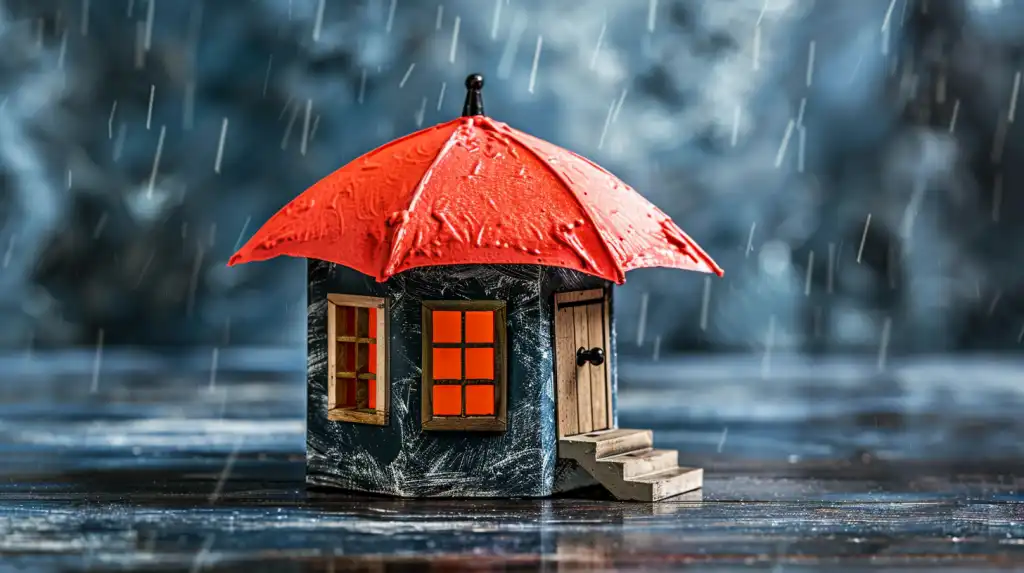01 August 2025
Homeownership is a significant milestone, and with it comes a slew of responsibilities—one of the most important being homeowners insurance. Whether you're a first-time buyer or have owned your home for years, understanding what your policy covers (and what it doesn’t) is crucial. After all, the last thing you want is to be caught off guard by an unexpected event and find out your insurance won’t help cover the costs.In this article, we’ll dive into the essentials of homeowners insurance. We’ll break down what’s typically covered, what’s often excluded, and what you might need to add on. By the end, you’ll feel more confident navigating your policy and making sure your home—and wallet—are protected.
What Is Homeowners Insurance?

Before we get into the nitty-gritty of what’s covered and what’s not, let's start with the basics. Homeowners insurance is a type of property insurance that provides financial protection against losses and damages to your home and personal belongings. It also offers liability coverage if someone gets injured on your property. Essentially, it’s your safety net for when life throws you curveballs.
Most homeowners insurance policies are comprehensive, but they’re not one-size-fits-all. There are different levels of coverage, and what’s covered can vary depending on the type of policy you choose and the state you live in. So, it’s essential to read through your policy carefully and understand the specific terms.
What’s Typically Covered by Homeowners Insurance?
1. Dwelling Coverage (Your House Itself)
At the heart of every homeowners insurance policy is dwelling coverage. This is the part that covers the structure of your home itself—think walls, roof, floors, and built-in appliances. If a covered peril (we’ll get into that in a bit) damages or destroys your home, your insurance will help pay for repairs or rebuilding.
Common Covered Perils:
- Fire and smoke damage: If your house catches fire or suffers smoke damage, your policy will likely cover the cost of repairs.- Windstorms and hail: Hurricanes, tornadoes, and storms that bring wind or hail are often covered.
- Lightning strikes: If lightning causes a fire or other damage, you’re typically protected.
- Vandalism: If someone breaks into your home and causes damage, your policy will help with repairs.
- Falling objects: This can include anything from a tree branch that crashes through your roof to debris falling from the sky.
But keep in mind, your coverage only applies to the structure of your home itself. Detached structures, like garages or sheds, are usually covered separately—if they’re covered at all.
2. Personal Property Coverage (Your Stuff)
Personal property coverage protects your belongings—furniture, electronics, clothing, and more. If a covered peril damages or destroys your stuff, or if it’s stolen, your insurance can help replace it.
However, there’s a limit to how much your policy will pay for personal property. And certain high-value items, like jewelry, art, or collectibles, may have lower coverage limits unless you get additional protection through a rider or endorsement.
3. Liability Protection (In Case Someone Gets Hurt)
Homeowners insurance also includes liability protection, which comes in handy if someone gets hurt on your property and decides to sue you. For instance, if your neighbor slips on your icy driveway and breaks their leg, your policy could cover their medical bills and legal expenses if they take you to court.
Liability coverage typically includes:
- Medical payments: Covers medical expenses if a guest is injured on your property.
- Legal fees: If someone sues you, your policy can cover your defense costs.
- Judgments: If you’re found liable, your policy can help pay the settlement or judgment against you.
4. Additional Living Expenses (If You Need to Temporarily Move)
What happens if your home becomes uninhabitable due to a covered peril? This is where additional living expenses (ALE) coverage comes into play. If you need to temporarily relocate, your insurance can help pay for things like hotel stays, restaurant meals, and other living expenses while your home is being repaired.
What’s Not Covered by Homeowners Insurance?
While homeowners insurance covers a lot, it doesn’t cover everything. There are some important exclusions you should know about so that you’re not blindsided if disaster strikes.
1. Flood Damage
Flooding might be one of the most common natural disasters, but it’s not covered by standard homeowners insurance policies. If you live in an area prone to flooding (or even if you don’t), you’ll need a separate flood insurance policy to be protected.
Flood damage can happen from:
- Overflowing rivers or lakes
- Storm surges
- Heavy rainfall that leads to water entering your home
If you’re not sure whether flood insurance is necessary, consider how much it would cost to repair or replace your home and belongings in the event of a flood. It’s better to be safe than sorry, especially in flood-prone areas.
2. Earthquake Damage
Like flooding, earthquakes are another natural disaster that isn’t covered by standard homeowners insurance. If you live in an area prone to seismic activity, you’ll want to look into purchasing an earthquake insurance policy.
Earthquake insurance typically covers:
- The cost of repairing or rebuilding your home after an earthquake.
- Replacing personal belongings damaged in the quake.
- Additional living expenses if your home is uninhabitable.
3. Normal Wear and Tear
Homeowners insurance isn’t a maintenance policy. It won’t cover routine wear and tear, or damage that occurs as a result of neglect. For example, if your roof starts leaking because it’s 20 years old and hasn’t been replaced, your insurance company likely won’t help with repairs.
To avoid costly out-of-pocket repairs, it's essential to keep up with regular home maintenance. Replace old roofing, fix leaky faucets, and address small issues before they turn into big problems. Think of it like taking your car in for regular tune-ups—your home needs the same care.
4. Pest Infestations
No one wants to deal with pests, but unfortunately, homeowners insurance doesn’t cover damage caused by infestations. Whether it’s termites, rats, or other critters, you’re on your own when it comes to extermination and repairs.
Pest damage is considered preventable, meaning insurance companies view it as something you should have taken care of before it became a problem. Regular inspections and maintenance can help you avoid this headache down the line.
5. High-Value Items Beyond Policy Limits
While personal property coverage is included in your homeowners insurance, there are limits to how much your policy will pay out for certain high-value items. Things like jewelry, fine art, collectibles, and expensive electronics may exceed these limits.
For example, your policy might only cover jewelry up to $1,500. If you own a diamond ring worth $5,000, you’ll want to add a rider or special endorsement to your policy to ensure it's fully protected.
6. Business-Related Equipment or Injuries
If you run a business out of your home, be aware that homeowners insurance might not cover business-related equipment or liability. For instance, if a client visiting your home office slips and falls, your policy might not cover their medical expenses or legal fees. Similarly, if your business equipment is damaged in a fire, it may not be covered.
To protect yourself, consider adding business insurance to cover your home-based business activities.
How to Customize Your Homeowners Insurance
No two homes are exactly alike, and neither are homeowners insurance policies. Thankfully, most insurance companies allow you to customize your policy to fit your specific needs.
1. Endorsements and Riders
As we mentioned earlier, you can add endorsements or riders to your policy to cover things not included in your standard coverage. Common endorsements include:
- Flood insurance: For protection against flood damage.
- Earthquake insurance: If you live in an area with seismic activity.
- Scheduled personal property: To cover high-value items like jewelry or art.
- Water backup coverage: Protects against damage from backed-up drains or sewers.
2. Increasing Policy Limits
If the standard coverage limits feel too low for your needs, you can increase them for added peace of mind. This is especially important if you have high-value personal belongings or want to ensure you have adequate liability protection.
3. Bundling Policies
Many insurance companies offer discounts if you bundle your homeowners insurance with other policies, like auto or life insurance. Not only can this save you money, but it also simplifies the process of managing your insurance needs.
Final Thoughts
Homeowners insurance is essential for protecting your biggest investment—your home. But not all policies are created equal. While most will cover damage from common perils like fire or wind, they won’t protect you from everything. Floods, earthquakes, and even regular wear and tear are often excluded, meaning you’ll need to take extra steps to ensure you’re fully covered.
The key is to understand your policy inside and out. Don’t be afraid to ask questions, add necessary endorsements, or increase your coverage limits. After all, the last thing you want is a nasty surprise when you go to file a claim.
Now that you’re armed with the basics, take a fresh look at your homeowners insurance and make sure it fits your needs. Your future self will thank you!
---


